Horses are majestic creatures, and their behavior can sometimes be as complex as it is fascinating. Among the behaviors that can perplex and even alarm riders is rearing — when a horse stands up on its hind legs. This action can be startling, and understanding it is crucial for the safety and well-being of both the horse and the rider. But why do horses rear? Let’s find out.
Several factors can contribute to horse rearing, including:
- Fear or anxiety: Horses might rear in response to something that scares them.
- Pain: Discomfort from ill-fitting tack or dental issues may cause a horse to rear.
- Frustration or confusion: If a horse doesn’t understand a rider’s cues, it might express its frustration through rearing.
- Disrespect or dominance: A horse might rear as a way to assert itself if it doesn’t respect the rider’s authority.
Exploring the Multifaceted Nature of Horse Rearing
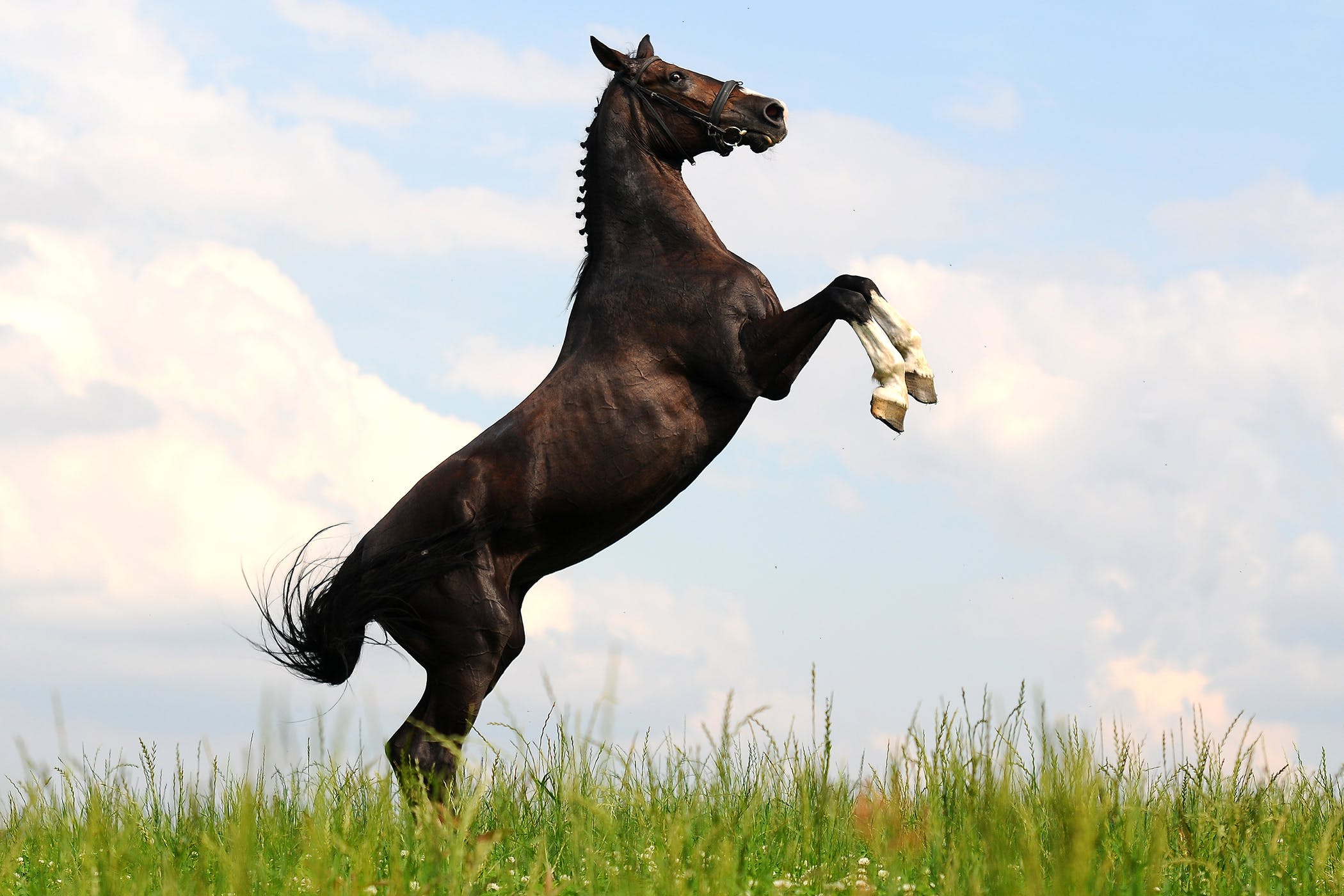
Delving into the complex world of equine behavior, especially the reasons behind rearing, is pivotal for those looking to cultivate a safer and more understanding partnership with their horses. By examining the triggers and underlying issues that lead to this behavior, we can enhance our ability to manage and care for these animals effectively.
Psychological and Social Contributors to Equine Rearing
Understanding the psychological and social factors that influence a horse’s likelihood to rear is fundamental. Horses are sensitive creatures, and their behavior is a tapestry woven from their mental and emotional state. Among the social and psychological considerations are:
- Changes in group dynamics that may result in stress or conflict
- The emergence of repressed memories from previous negative experiences
- A defensive stance taken in reaction to overly assertive handling
The Role of Physical Well-being in Equine Actions
Horses, unable to vocalize their pain, might express their discomfort through behavioral changes such as rearing. It is crucial to conduct routine examinations for potential physical issues that could be influencing their actions, including:
- Conditions affecting the limbs or hooves that could impair movement
- Spinal discomfort that may be worsened by riding
Environmental Impacts on Horse Behavior
Various external conditions can also play a role in a horse’s inclination to rear. Stress-inducing environments can trigger this behavior, making it essential to consider factors such as:
- Insufficient space for free movement
- Unexpected disturbances that might cause alarm
Interpreting Pre-Rearing Behavioral Clues
Observing a horse’s behavior closely can provide valuable insights into its state of mind and potential for rearing. Signs of agitation or discomfort can manifest in various ways, such as:
- An increase in ground pawing as an indication of restlessness
- A heightened tail swish as a marker of annoyance
Preventing Rearing through Behavior Management
It is essential to recognize the early indicators of distress or aggression in horses to prevent rearing episodes. Such indicators may be subtle but hold the key to preempting more severe reactions. These signs include:
- Warning nips or air snaps directed towards people nearby
- Uncharacteristic vocal sounds that suggest unease or potential defiance
By becoming fluent in the language of equine body language and addressing the diverse causes of rearing, we not only safeguard human handlers but also contribute positively to the emotional and physical health of our equine companions.
Guidance for Managing Rearing Horses
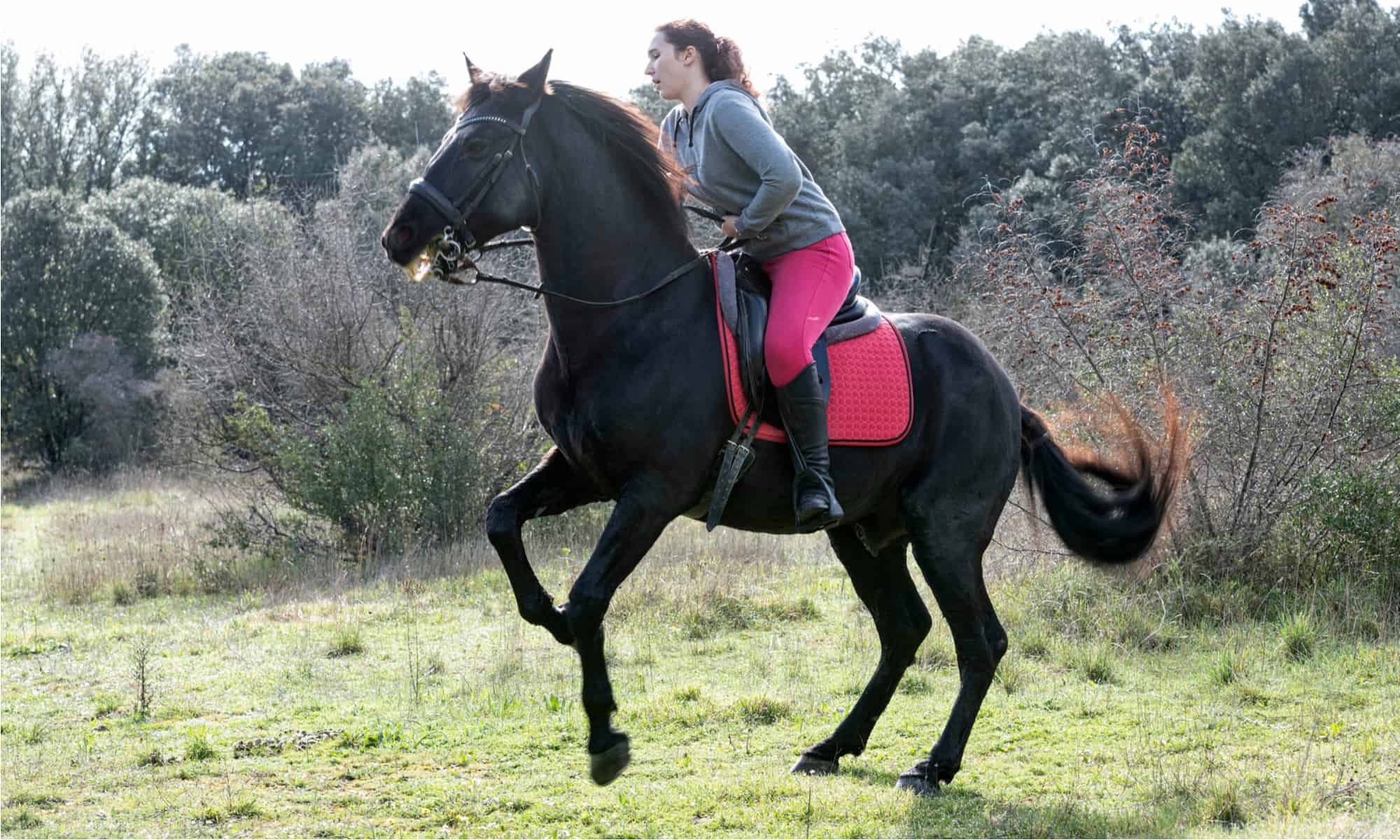
Effectively managing rearing horses calls for a comprehensive strategy that includes a deep understanding of equine psychology, enhancing communication methods, and setting well-defined limits. A trainer’s aptitude for interpreting horse signals and acting with firmness yet compassion is crucial. Such an approach ensures that the efforts to counteract rearing are built on a foundation of trust and respect, which is essential for a peaceful coexistence between rider and horse.
Refined Horse Training Tips for Reducing Rearing
Adapting training techniques to suit individual horses and specific situations is vital in minimizing the incidence of rearing. Strategies such as channeling a horse’s focus into lateral movements can distract and reassert the rider’s influence. Additional tactics include:
- Timely rewards: Reinforce positive actions immediately to promote repetition.
- Controlled exposure: Incrementally introduce the horse to potential triggers in a safe setting.
- Clarity in communication: Provide unmistakable and stable commands to prevent misinterpretation.
Foundational Techniques to Deter Horse Rearing
Basic training exercises are key in deterring horse rearing. Initiating with straightforward tasks that cultivate compliance and deference is important. For example, lunging can instruct the horse to heed commands and dispel surplus energy that may lead to rearing. It’s also imperative to:
- Display leadership: As natural herd animals, horses seek a dependable leader.
- Monitor for physical distress: Habitually inspect tack fitment and watch for any signs of pain that could trigger rearing.
- Exhibit patience: Give the horse time to grasp and act on instructions without coercion.
Personalized Approaches to Counteract Rearing
Recognizing the distinctiveness of each horse is crucial, and thus, methods to counteract rearing should be tailored accordingly. A horse’s temperament can dictate the approach, with some requiring a softer touch and others a more resolute manner. Achieving a careful balance is vital. Specific horses might gain from:
- Focused groundwork: Specialized exercises that nurture a reciprocal bond of trust and authority.
- Incremental behavior modification: Steadily directing the horse toward preferred actions with manageable progressions.
- Expert evaluation: A seasoned trainer’s perspective can be instrumental in understanding a horse’s conduct.
Leveraging Communication in Rearing Management
Successful communication goes beyond issuing directives; it’s about attentive listening and catering to the horse’s requirements. Skilled trainers will:
- Interpret behavioral signs: Be skilled at recognizing horse behavior to foresee and avert undesired actions.
- Implement vocal instructions: Use a tranquil yet assured voice to provide guidance and comfort to the horse.
- Modify riding methods: Know when to apply and alleviate pressure to navigate the horse without causing anxiety.
By embracing these techniques, equestrians can foster an environment conducive to safety and accord, markedly diminishing the chances of rearing occurrences.
Enhancing Equine Harmony and Safety
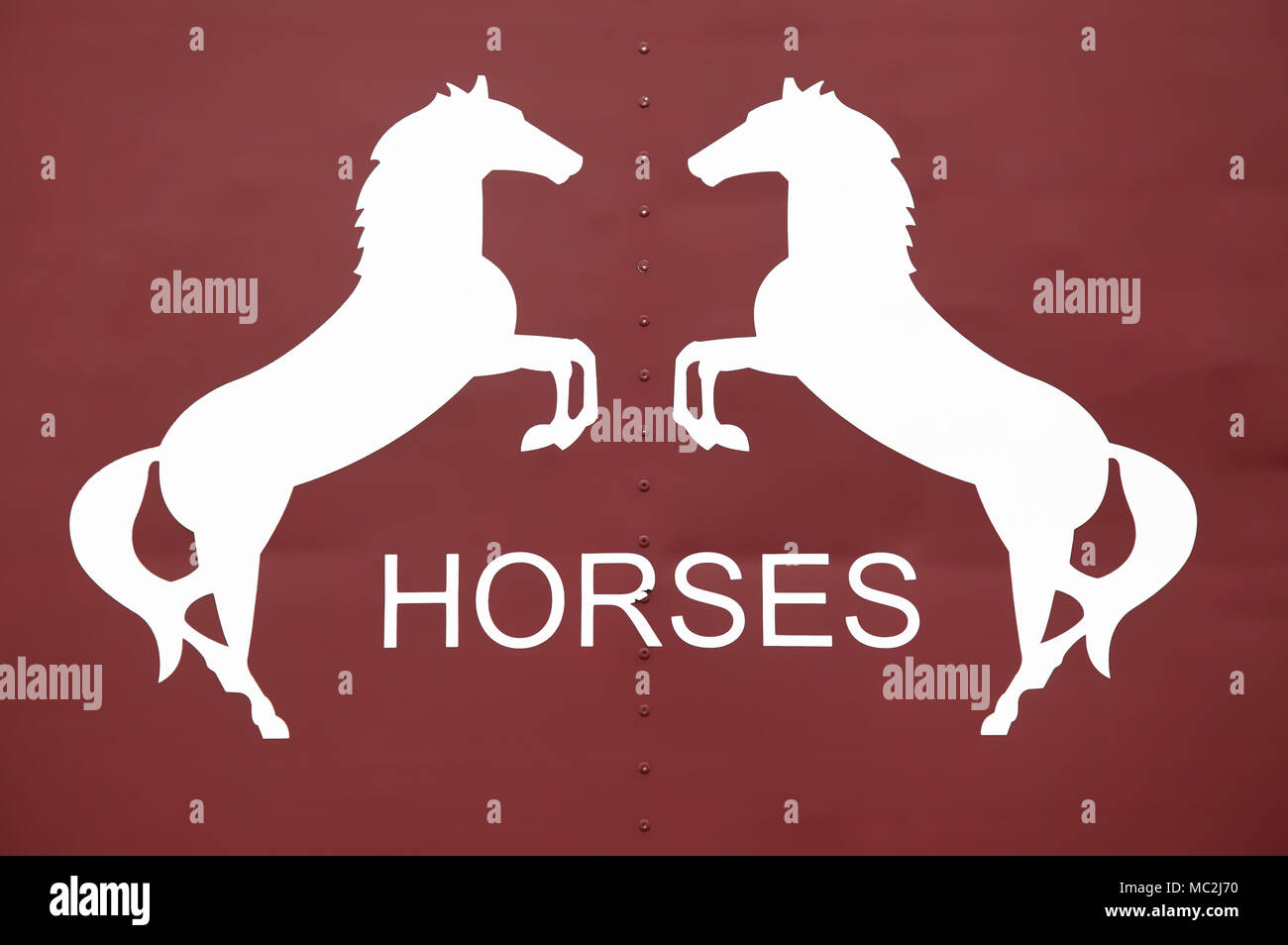
To manage the behavior of rearing in horses effectively, a proactive and nuanced approach is essential. Creating a serene and respectful atmosphere, while maintaining firm and consistent training practices, is fundamental in reducing the chances of a horse resorting to rearing. This discussion aims to delve into a range of methods focused on cultivating a balanced relationship between horse and rider, ensuring their mutual safety.
Detecting Stress Indicators
Each horse presents a distinct set of experiences and stress tolerances. To avert rearing, it is critical to become proficient in interpreting a horse’s subtle communicative cues and individual personality traits. Through careful observation, one can identify and address specific factors causing stress or discomfort that may provoke a horse to rear, thereby fostering a safer, more reassuring environment.
Groundwork Fundamentals and Horse-Human Communication
Effective groundwork is pivotal in preventing unwanted equine behaviors, including rearing. Establishing groundwork principles enhances mutual respect and understanding. Training that entails leading exercises, gradual exposure to various stimuli, and reinforcing good behavior consistently is key to building a solid foundation of trust and respect.
Comprehensive Groundwork and Gradual Exposure
- Respectful leading: Guide the horse with light cues, fostering obedience to gentle direction.
- Systematic desensitization: Introduce the horse to unfamiliar scenarios incrementally to decrease reactionary behaviors.
Applying Reward-Based Training
- Timely approval: Provide immediate positive reinforcement, such as praise or a gentle stroke, when the horse responds correctly.
Establishing Predictability in Training Regimens
Uniform commands and habitual training instill a sense of stability in horses. A structured routine not only promotes physical fitness but also a calm mental state, diminishing the likelihood of rearing. Trust is cultivated through consistent and familiar training patterns.
Customized Training Strategies
Accounting for each horse’s unique temperament and requirements is essential for effective training. Adjusting techniques to suit individual horses can prevent rearing by catering to their specific behavioral needs and disposition.
Importance of Rider Cognizance
The rider’s influence is crucial in discouraging rearing. A balanced posture, precise leg signals, and gentle hands are vital in preventing horses from feeling compelled to rear. In instances where rearing may be imminent, the rider’s priority should be to guide the horse’s momentum forward, utilizing leg pressure and open reins to divert from the undesirable behavior.
Implementing these strategies can lead to a safer training environment, where maintaining a positive and educational setting is of utmost importance, and where the prevention of rearing is achieved through respect and trust.
Enhancing the Dialogue with Horses
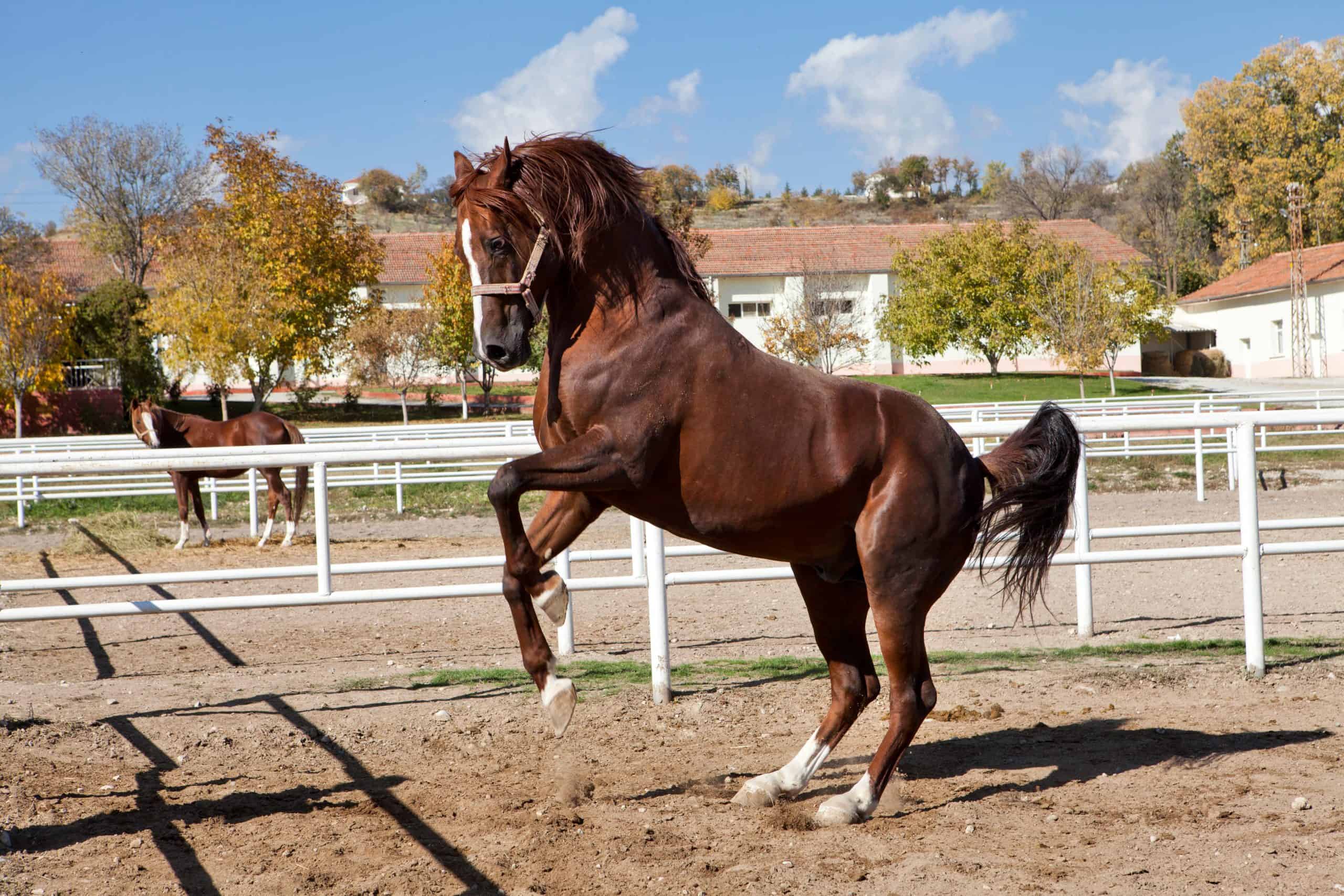
Mastering horse communication involves a deep appreciation for the intricate and often subtle expressions of our equine companions. Their body language is a dynamic form of expression that reflects their emotional and physical wellbeing. Acknowledging and interpreting these silent signals is a key component in strengthening the bond between horse and equestrian.
Interpreting Subtle Equine Expressions
Understanding the subtleties of a horse’s body language necessitates keen observation skills. It’s important to pay attention to nuances such as:
- The meaning behind a horse’s ear positioning or muscle tension.
- Behavioral cues like a horse’s gaze or nostril flare, which can signal a range of emotions from excitement to stress.
By being attuned to these details, handlers can preemptively address issues, maintaining a calm and stable environment.
Early Detection of Equine Unease
Identifying early signs of stress or discomfort in horses is essential for preventing more significant behavioral issues. Indicators such as a tense body or resistance to bridling can provide early warning of a horse’s discontent. By addressing these signs early, handlers can mitigate the risk of more severe reactions and maintain a tranquil atmosphere.
Strategic Responses to Equine Anxiety
Responding strategically to signs of anxiety in horses requires a combination of redirection and reassurance. Engaging the horse in focused activities or modifying the intensity of training can help alleviate their stress. Calming vocal reassurances also play a role in soothing an anxious horse and redirecting their energy.
Fostering Trust with Effective Communication
The foundation of successful horse communication lies in trust and respect. By consistently and accurately responding to their non-verbal cues, handlers nurture a sense of security in horses. This reciprocal understanding paves the way for a more controlled and safe interaction between horse and handler. Bonding activities and predictable training routines are instrumental in cultivating this trusting relationship.
Appreciating Each Horse’s Uniqueness
Recognizing the individuality of each horse is vital in achieving effective communication. Taking into account a horse’s past experiences, personal preferences, and distinctive behaviors enables trainers to personalize their approach, fostering a more empathetic and successful interaction.
A comprehensive grasp of horse communication transcends the realm of behavior management; it is about nurturing a deep, respectful partnership with these intelligent creatures. By dedicating time to understand and respond to the nuances of equine behavior, equestrians can create a meaningful and rewarding dialogue built on a foundation of respect and mutual understanding.
If you’re intrigued by the behaviors of horses, you might be interested in understanding not only why horses rear but also the reasons behind other common equine actions. For a deeper dive into their behavior, explore our articles on why horses buck, which can provide insight into this defensive or playful action, why horses weave, a behavior that often indicates stress or boredom, and why horses neigh, which is a form of vocal communication among these majestic animals. Each behavior communicates something unique about a horse’s needs or feelings, enriching our understanding of these complex creatures.
Expert Advice: Training and Managing Rearing Horses
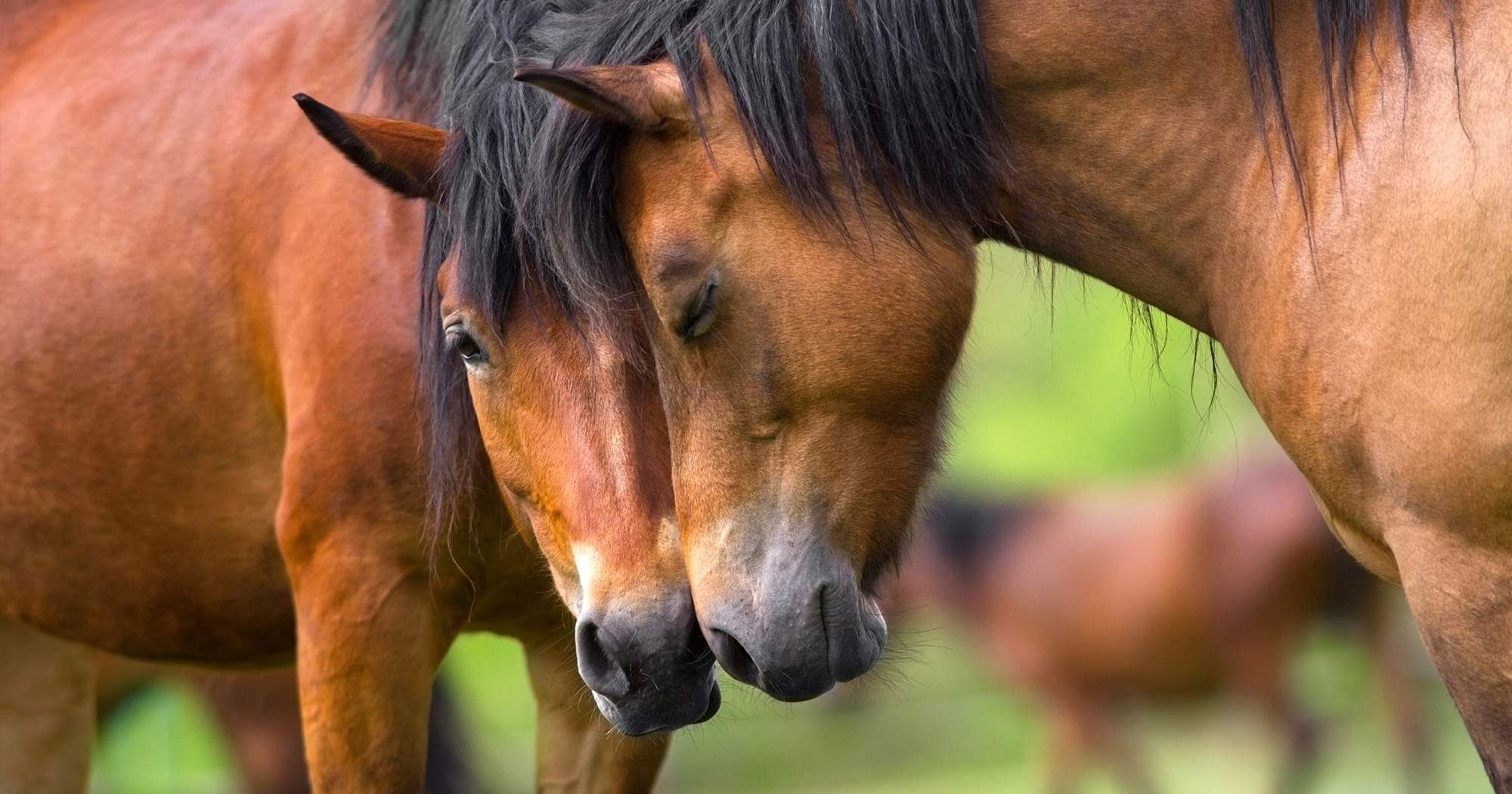
Professional Insights on Horse Behavior
Seeking professional insights on horse behavior is often recommended, especially when dealing with rearing. Trainers with experience in managing rearing horses can provide tailored advice and strategies to address the issue safely and effectively.
Advanced Horse Training Tips
For those with the necessary skills, advanced horse training tips can involve exercises that build confidence and respect between horse and rider. These techniques go beyond basic training and delve into the nuances of equine psychology and behavior modification.
In conclusion, understanding why horses rear and how to manage this behavior is essential for any rider. With patience, knowledge, and professional guidance, rearing can often be addressed successfully, leading to a safer and more enjoyable experience for both horse and rider.



